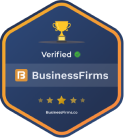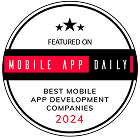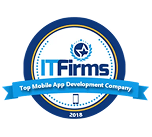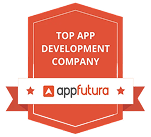Introduction
Why staff augmentation is booming in 2025
Think of staff augmentation as a reliable toolkit you pull out when a project gets urgent, complex, or needs a rare skill set — without the full-time hiring commitment. In 2025, the model is exploding because businesses want agility more than ever. Remote and hybrid work norms, AI-driven projects, and intense competition for niche engineers make on-demand talent a must-have.
Industry researchers and workforce analysts show growing adoption and sizable market projections for staff augmentation and related contingent-workforce models. Estimates vary by source, but multiple market studies report strong, double-digit growth in the broader IT staffing/augmentation market over the next few years.
What is IT Staff Augmentation? (Simplified Explanation with Example)
At its core, IT staff augmentation is a flexible resourcing model where a company brings in external technical specialists (contractors, contractors-through-agencies, or vetted freelancers) to extend its internal team for a defined period or project.
Imagine your product team needs two senior React developers and a cloud architect for a six-month sprint. Instead of hiring full-time — with recruiting, benefits, and onboarding overhead — you augment the team with experienced contractors who plug into your processes and leave when the job is done.
How it differs from hiring, outsourcing, and managed services
- Hiring = full-time employees (long-term commitment).
- Outsourcing = handing a whole project to a third-party vendor (less direct control).
- Managed services = vendor runs and guarantees an entire service (ongoing SLA).
- Staff augmentation = you keep control; you add people who work under your direction. Easy to scale up/down. (We’ll include a direct comparison table later.)
Who Needs IT Staff Augmentation? (Startups vs Enterprises Compared)
Typical startup scenarios
Startups use augmentation to build MVPs quickly, plug skills gaps (e.g., ML, devops), and avoid long hiring cycles when the runway is short. Want to prove product-market fit in 3 months? Augmentation helps you build fast.
Typical enterprise scenarios
Enterprises use augmentation to surge capacity for large transformation programs, modernize legacy systems without disrupting operations, and access specialized talent (security, cloud architecture) during digital transformations. Many enterprises prefer augmentation to avoid the internal politics and lengthy full-time hiring approvals.
Also Read – RAG Use Cases 2025: Transform Mobile & Web Apps | Data-Backed Guide
15 Game-Changing Benefits of IT Staff Augmentation
Below, I break each benefit down so you can see not just the “what,” but the “why it matters.”
1. Cost Savings Without Compromising Quality
Hiring is expensive: recruiting fees, benefits, equipment, and the salary ramp. Staff augmentation converts fixed employment costs into variable project costs — often reducing total spend by notable percentages in real-world comparisons.
Industry analyses commonly cite typical cost savings in the 20–35% ballpark when companies opt for augmentation vs full-time hires for specialized or short-term roles. (Exact outcomes depend on geography, seniority, and engagement model.)
2. Faster Time-to-Market with Ready Talent
Need features delivered yesterday? Augmented talent is typically “project-ready,” decreasing recruitment lead time and accelerating delivery. This means faster sprints, quicker releases, and earlier revenue or feedback loops.
3. Scalability & Flexibility on Demand
Scale teams up or down per sprint without long-term commitments. It’s like having an elastic team: you pay for capacity when you need it, and you scale back when you don’t.
4. Reduced Hiring & Recruitment Risks
Interviewing, screening, and matching are handled by the vendor (or facilitated by your team), reducing the risk of a bad, costly hire. You can often trial contractors before making longer commitments.
5. Access to a Global Pool of Niche Talent
Augmentation opens global talent markets — data scientists in Eastern Europe, DevOps engineers in Latin America, or AI specialists in Asia — widening your sourcing footprint and reducing time-to-hire. With remote and hybrid roles mainstream in 2025, companies increasingly tap global talent for productivity and cost-efficiency.
6. Lower Training & Onboarding Costs
Contractors typically arrive with domain experience; onboarding focuses on your product, not basic skills training. That’s faster ramp-up and immediate contributions.
7. Seamless Integration with Existing Teams
When executed well, augmented professionals act as team members — not external silos. Good partners provide cultural fit screening and process alignment, so the extra hires plug into daily standups, code reviews, and CI/CD pipelines.
8. Enhanced Focus on Core Business Functions
By shifting tactical development work to augmented staff, your core team can focus on strategy, architecture, customer success, and product vision.
9. Improved Business Continuity & Risk Management
Need disaster recovery expertise, security incident triage, or urgent compliance work? Augmentation gives quick access to experts who can shore up operations without reassigning your permanent teams.
10. Gain a Competitive Edge Through Agility
When your competitors are still hiring slowly, you can be shipping features. Agility — the ability to redeploy talent quickly — is a strategic advantage in fast-moving markets.
11. Reduced Overhead & Administrative Costs
Less payroll administration, fewer benefits to manage, and reduced office footprint for contingent staff lower overhead. The Small Business Administration and industry advisors often recommend factoring 1.2–1.4× salary for the total cost of hiring full-time staff; augmentation sidesteps a lot of that.
12. Access to Latest Tools & Tech Expertise
Staff augmentation firms and contractors often specialize in modern stacks and tooling (Kubernetes, Terraform, MLOps). That expertise brings best practices and new tooling into your project without internal re-skilling.
13. Better Project Control & Transparency
You direct the work, set priorities, and maintain custody of IP. Compared with pure outsourcing, augmentation gives you more control while still providing external capacity.
14. Support for Legacy System Modernization
Legacy app modernization needs rare skill sets (mainframe migration, API layering). Augmented teams can safely refactor systems while your core teams maintain operations.
15. Future-Readiness with Remote-First Talent
Remote work trends mean that remote-first talent is now standard. Staff augmentation helps your company embrace distributed teams, hire across time zones, and build resilience into its hiring strategy. Analysts predict continued growth in remote/hybrid roles, as well as the adoption of contingent workforces, in 2025.
Quick Metrics Table: Benefits & Typical Impact
| Benefit | What it Usually Means | Typical Impact / Estimate |
|---|---|---|
| Cost savings | Lower total cost vs full hires for short-term needs | ~20–35% savings (estimated ranges in industry studies). |
| Speed to hire | Time to get talent into sprints | Days–weeks vs weeks–months for full hire |
| Scalability | Flex up/down per project | Elastic team sizing — immediate scaling |
| Onboarding speed | Ramp in weeks rather than months | Faster project kickoffs |
| Access to niche skills | Immediately onboard specialized roles | Broader talent pool across geographies |
Also Read – AI App Development Cost in 2025: From MVPs to Full-Scale Solutions
Putting Theory into Practice: How Companies Actually Use Staff Augmentation (real scenarios & mini case studies)
Mini case: startup accelerates MVP delivery
A fintech startup faced a three-month deadline to deliver a payments MVP. Hiring three senior backend engineers would take too long. They engaged a staff augmentation partner, onboarded two mid/senior Java engineers and a QA specialist within two weeks, and shipped the MVP on schedule. (Real-world case studies of similar outcomes appear across vendor blogs and case pages.)
Mini case: enterprise modernizes legacy platform
A large enterprise needed to modernize a decade-old ERP integration without halting operations. They used augmentation to bring in middleware and API specialists who worked alongside in-house teams for 9 months — enabling phased modernization while preserving continuity. Multiple augmentation vendors publish similar case examples showing this pattern.
Challenges to Expect (and How to Overcome Them)
No model is perfect. Here are common issues and fixes:
- Cultural misfit or communication gaps → Insist on overlap hours, pair programming, and cultural-fit screening.
- Knowledge drain when contractors leave → Use knowledge-transfer protocols, recorded demos, and documentation sprints.
- Quality control worries → Retain technical oversight, code reviews, and CI/CD checks.
- IP & compliance concerns → Ensure NDAs, data access policies, and proper contracting are in place.
Address these proactively, and augmentation becomes low-risk and high-reward.
Staff Augmentation vs Outsourcing vs Managed Services (comparison table)
| Feature | Staff Augmentation | Outsourcing | Managed Services |
|---|---|---|---|
| Control | High — you manage day-to-day | Low — vendor manages delivery | Low–medium — vendor manages service, you set SLAs |
| Best for | Short-term skills, surge capacity | End-to-end projects | Ongoing services (ops, networks, 24/7 support) |
| Cost model | Hourly / fixed for contractors | Fixed-price / milestone | Subscription / SLA-based |
| IP ownership | Usually retained by the client | Depends on the contract | Usually retained by client (check SLA) |
| Scalability | Very flexible | Project-based scalability | Scales with service tiers |
| Time to start | Days–weeks | Weeks–months | Weeks–months |
| Typical duration | Short–mid-term | Project term | Long-term/ongoing |
(Use this table to choose the model that matches your control needs and risk tolerance.)
How Does IT Staff Augmentation Work? (Step-by-Step Process)
- Define needs & scope — skills, duration, deliverables.
- Select partner or marketplace — evaluate portfolios & references.
- Candidate shortlisting — vendor proposes CVs and interviews happen.
- Onboard & align — access, project context, team rituals.
- Sprint & measure — monitor deliverables, velocity, code quality.
- Knowledge transfer & offboarding — document and transition.
This flow keeps your product ownership intact while leveraging external capabilities.
Choosing the Right Staff Augmentation Partner: Key Considerations
- Technical vetting process — do they do live coding, pair sessions, or only CV-based screening?
- Cultural fit & English proficiency — matters for remote collaboration.
- References & case studies — look for relevant domain experience.
- Data security & compliance — ISO, SOC, or region-specific compliance for sensitive work.
- Pricing transparency — avoid hidden fees; ask about bench charges and replacement policies.
- Local presence vs distributed team — pick what matters for time zone overlap and legal jurisdiction.
Red flags
- Vague SLAs, no references, too-good-to-be-true pricing, no backup/replacement guarantees.
Emerging Trends: The Future of Staff Augmentation (AI, Automation, Remote Work)
- AI-assisted sourcing and vetting speed candidate matching and assessment. Recruiters and vendors increasingly use AI to pre-screen and predict success
- Remote-first and distributed teams are mainstream in 2025; augmentation taps global time-zone advantages and diverse skill pools
- Specialization in cloud-native, MLOps, and cybersecurity is rising as companies invest in future-proof stacks. Research firms track strong growth in professional IT services and contingent workforce models.
Also Read – AI Agents Explained: Why They Matter and Real-World Use Cases
Summary: Why Staff Augmentation is a Growth Catalyst
Staff augmentation is not just a stopgap — it’s a strategic lever. It gives startups the velocity to test and learn, and it gives enterprises the flexibility to modernize and innovate without the friction of full-time hiring. When done right, staff augmentation improves time-to-market, lowers costs for short-term functions, and brings specialized skills into the organization exactly when they’re needed.
Conclusion
If your company faces fluctuating project needs, skill gaps, or aggressive timelines, staff augmentation is one of the most practical tools in your arsenal. Treat it like a speed dial to world-class talent: pick a partner with strong vetting, clear SLAs, and a track record of integrating with client teams. Use documented onboarding and knowledge-transfer practices so the gains you achieve are sustainable. With remote work and AI reshaping talent markets in 2025, augmentation isn’t a workaround — it’s a competitive capability.
FAQ
What does IPH Technologies specialize in?
How does IPH Technologies provide IT staff augmentation?
Can IPH Technologies support both startups and enterprises?
Yes! Startups love us because we help them launch MVPs faster, reduce time-to-market, and optimize costs by providing flexible, short-term engagement options. Enterprises, on the other hand, partner with us to modernize legacy systems, handle large-scale digital transformation projects, and scale their teams for long-term development goals. Our ability to adapt to both lean startup budgets and enterprise-grade requirements makes us a versatile partner for businesses of all sizes.
What kind of talent pool does IPH Technologies provide?
- Full-stack developers (React, Angular, Node.js, Python, Java, PHP, etc.)
- Mobile developers (Kotlin, Swift, Flutter, React Native)
- Cloud & DevOps engineers (AWS, Azure, GCP, Kubernetes, Terraform)
- AI & ML experts (Data Scientists, MLOps engineers)
- UI/UX designers and product strategists
- QA engineers and automation testers
- Legacy system specialists for modernization projects
This diversity allows us to meet even the most niche technical requirements.
How does IPH Technologies ensure quality in staff augmentation?
What industries does IPH Technologies serve?
- Fintech – secure banking apps, payment gateways
- Healthcare – HIPAA-compliant telemedicine platforms
- E-commerce – scalable marketplaces, on-demand apps
- Education & EdTech – e-learning apps, LMS solutions
- Logistics – fleet management, route optimization systems
- SaaS products – B2B/B2C cloud-based applications
Our domain expertise allows us to adapt to industry-specific compliance, performance, and user experience requirements.
How do IPH Technologies handle project confidentiality and security?
Does IPH Technologies only provide staff augmentation?
- Custom software development (end-to-end product builds)
- Mobile and web app development
- UI/UX design services
- Cloud migration & DevOps solutions
- QA & testing services
- Post-launch support and maintenance
This makes us a full-service technology partner that you can rely on, whether you want a dedicated resource or a complete project delivered from scratch.













.png)


